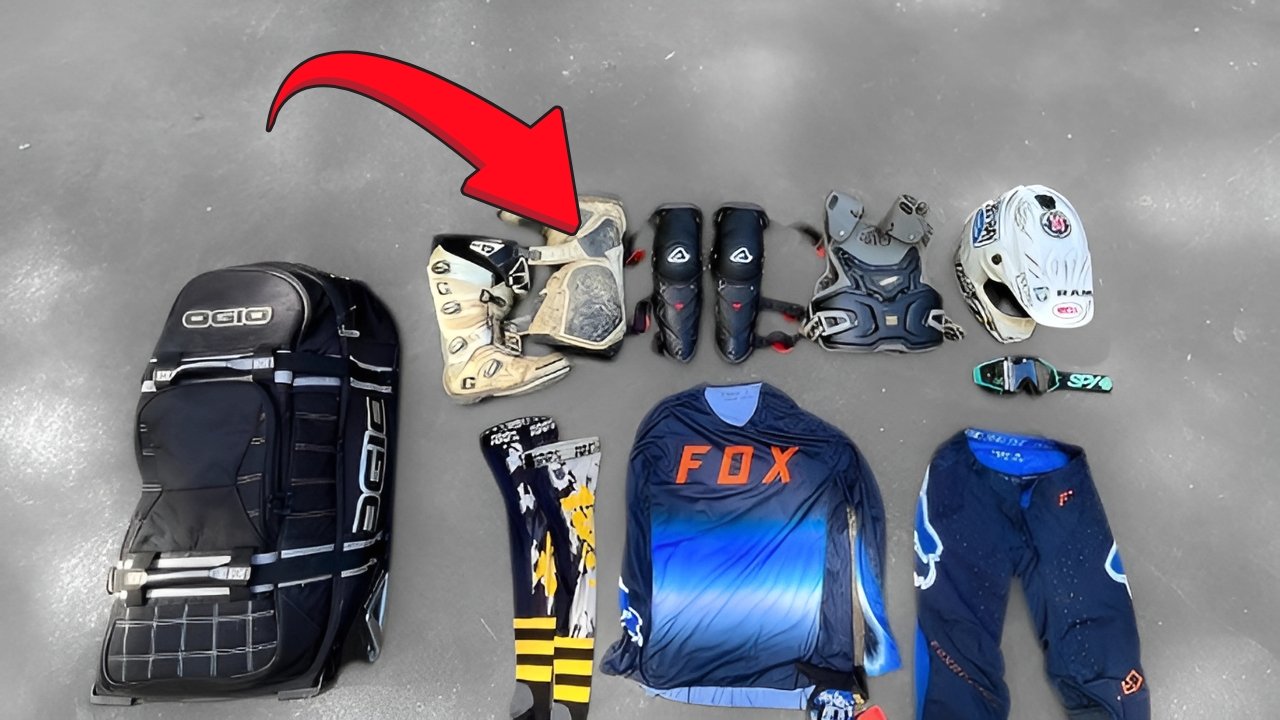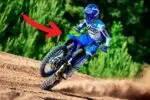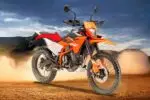11 Must-Have Dirt Bike Accessories for Beginners: Are you getting ready to hit the trails on your dirt bike for the very first time? Before you dive into the exciting world of off-road riding, it’s crucial to prepare with the right gear. Dirt biking is a thrilling sport, but it comes with its fair share of risks, especially for beginners. The right accessories can make a world of difference — not just in performance but also in keeping you safe.
This beginner’s guide covers the 11 essential dirt bike accessories you need before you twist the throttle. From helmets to hydration packs, we’ve got you geared up from head to toe.
Contents
- 0.1 1. Helmet: Your Ultimate Safety Shield
- 0.2 2. Goggles: Eye Protection on the Trail
- 0.3 3. Boots: Protect Your Feet and Ankles
- 0.4 4. Gloves: Grip and Comfort in One
- 0.5 5. Chest Protectors and Roost Guards: Body Armor for Riders
- 0.6 6. Neck Brace: Cervical Protection You Shouldn’t Skip
- 0.7 7. Knee and Elbow Guards: Guard Your Joints
- 0.8 8. Jersey and Riding Pants: More Than Just Style
- 0.9 9. Hydration Pack: Stay Energized and Alert
- 0.10 10. Tool Kit: Be Ready for Trailside Repairs
- 0.11 11. Base Layers: Comfort Starts Underneath
- 1 Final Thoughts: Ready to Ride?
- 2 Frequently Asked Questions (FAQs)
1. Helmet: Your Ultimate Safety Shield
Your helmet is the most important piece of gear you’ll own — think of it as your first line of defense. A high-quality, DOT-certified full-face helmet protects you from serious head injuries in case of falls or crashes.
What to look for in a good dirt bike helmet:
- DOT or Snell certification
- Snug fit without pressure points
- Ample ventilation for airflow
- Removable, washable liner
- Anti-fog, wide-vision visor
Pro Tip: Brands like Fox Racing, Bell, and Fly Racing are trusted by riders worldwide for quality and comfort. Always prioritize safety over aesthetics when choosing a helmet.
2. Goggles: Eye Protection on the Trail
Off-road riding means dust, mud, and flying debris — all hazards for your eyes. That’s why good-quality goggles are essential.
Features to consider:
- Scratch-resistant, anti-fog lenses
- UV protection
- A secure fit with your helmet (no gaps)
- Tear-off or roll-off systems for muddy rides
The 100% Armega goggles are a great pick, offering a wide field of view and excellent comfort for long rides.
3. Boots: Protect Your Feet and Ankles
Dirt bike boots do more than just look cool. They protect your ankles, shins, and toes from injuries during impacts, crashes, or kickbacks.
What makes a good pair of boots:
- Sturdy material with steel shanks and reinforced toe boxes
- Hinged ankle systems for support and flexibility
- Replaceable soles for long-term use
Expert Insight: As pro rider John Smith puts it, “A quality pair of boots can be the difference between a minor scare and a broken ankle.”
4. Gloves: Grip and Comfort in One
Your hands control the throttle, clutch, and brakes — so protect them well.
Things to look for:
- Reinforced palms for better grip
- Padding or armor on knuckles
- Breathable fabrics to reduce sweat
- Snug fit for better control
The Fox Racing Bomber gloves offer good value and protection, especially for new riders.
5. Chest Protectors and Roost Guards: Body Armor for Riders
Protect your upper body — especially your chest, ribs, and back — from crashes or flying rocks with chest protectors and roost guards.
Choose based on your riding style:
- Chest protectors: Full upper body armor, great for trail or enduro riding
- Roost guards: Lighter protection, ideal for motocross
Look for adjustable and well-ventilated designs to keep cool during long rides.
6. Neck Brace: Cervical Protection You Shouldn’t Skip
Neck braces are often overlooked by beginners but offer crucial protection in the event of a crash. They help prevent spinal injuries by limiting extreme neck movement.
Key considerations:
- Compatible with your helmet and chest gear
- Comfortable fit without restricting motion
- Adjustable straps for a secure fit
Properly adjusting your neck brace ensures both safety and comfort on the track or trail.
7. Knee and Elbow Guards: Guard Your Joints
Joints are often the first to take a hit during a fall. Wearing guards minimizes the impact and reduces the risk of fractures or bruises.
Look for:
- Lightweight but sturdy materials
- Adjustable straps for secure placement
- Flexible design to maintain mobility
Leatt’s Dual Axis Knee Guards are known for combining protection and comfort — perfect for trail riders.
8. Jersey and Riding Pants: More Than Just Style
Your jersey and pants aren’t just about looking cool — they’re designed to handle the rough and tumble of dirt trails.
What to look for:
- Tear-resistant, breathable fabrics
- Moisture-wicking properties
- Reinforced padding in high-impact zones
Though looking stylish is nice, make sure your gear is functional, especially when you’re still learning the ropes.
9. Hydration Pack: Stay Energized and Alert
Staying hydrated while riding is often underestimated, but dehydration can impair focus and reaction time.
What makes a good hydration pack:
- At least 2L capacity
- Comfortable straps and lightweight design
- Storage for tools, snacks, or maps
Pro Tip: Many pros swear by hydration packs — some even consider them as essential as their helmets.
10. Tool Kit: Be Ready for Trailside Repairs
A small mechanical issue can ruin your ride — unless you’re prepared.
Must-have tools:
- Spark plug wrench
- Allen keys and screwdrivers
- Tire levers
- Chain tool
- Zip ties and duct tape
Add a basic first aid kit, and you’re good to go. Compact tool kits made for dirt bikes are ideal for storing under the seat or in a backpack.
11. Base Layers: Comfort Starts Underneath
The gear under your gear matters more than you think. Base layers help regulate temperature, wick sweat, and reduce chafing.
Features to consider:
- Moisture-wicking and quick-dry fabric
- Compression fit to reduce muscle fatigue
- Antibacterial properties to fight odor
A good base layer helps you stay comfortable and focused on the trail rather than on discomfort or sweat.
Final Thoughts: Ready to Ride?
Starting your dirt biking journey is exciting, but never underestimate the importance of proper gear. From essential safety items like helmets and boots to comfort-focused options like base layers and hydration packs, each piece plays a role in your overall riding experience.
Gear up, choose wisely, and remember — it’s better to ride safe than to learn safety the hard way. Once you’re fully equipped, you’ll be ready to take on trails with confidence and control.
Frequently Asked Questions (FAQs)
Q1: How often should I replace my dirt bike helmet?
A: Helmets should be replaced every 3 to 5 years, or immediately after a crash. Over time, the protective foam inside degrades, reducing its effectiveness.
Q2: Is it necessary to invest in expensive gear as a beginner?
A: While you don’t need top-tier gear from day one, investing in high-quality helmets, boots, and protective gear is non-negotiable. Safety should always be your top priority.
Q3: Can I use street motorcycle gear for dirt biking?
A: Not ideally. Dirt bike gear is designed specifically for off-road conditions — it offers more flexibility, ventilation, and protection against dust, mud, and debris.
Q4: Are knee braces better than knee guards?
A: Knee braces offer superior protection against twisting injuries, making them ideal for advanced riders or aggressive trail riding. Knee guards are sufficient for beginners focused on impact protection.
Q5: What’s the best way to clean dirt bike gear?
A: Most gear can be cleaned with mild soap and water. Always check the label — helmets and pads may have removable liners. Avoid machine-washing helmets or using harsh chemicals.




